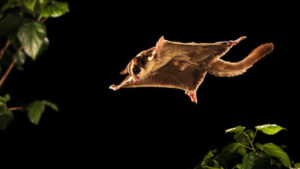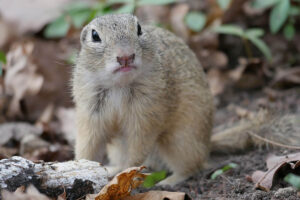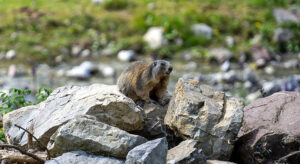Squirrel Removal
Do you need to get rid of squirrels? We can help!
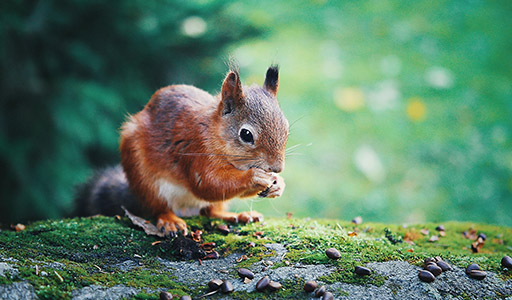
Pest Squirrels
Problems with Squirrels

Signs of a Squirrel Infestation
Once there are squirrels in the house, residents will be alerted to their presence via various sounds, smells, and signs of destruction.
You may hear gnawing, scratching, and pattering over the course of the day, which is unique to squirrel infestations as most other home-invading animals are nocturnal.
The sight of droppings, and the odors that accompany squirrels poop, also help homeowners detect squirrels in the house.
Finally, in your attic, individuals may find nesting materials, such as torn insulation, cardboard, and twigs.

Dangers of Squirrels in Your Home
While it is unlikely a squirrel will attack a person, the animal still presents a danger inside the house. Squirrels can cause significant damage to the exterior and interior of your home. Once inside, they present health hazards to your family. Squirrel excrement can spread diseases.
Ground squirrel burrows can undermine the soil, creating holes and weakening man-made embankments. They can compete with livestock for edible pasture and destroy crops or gardens.
All types of squirrels commonly harbor ticks, mites, and other parasites. Certain types of ground squirrels are known to carry the plague, as well.
Humane Squirrel Removal & Control Services

Entry into property
All types of squirrels are known to invade yards and homes. Houses make ideal nesting sites for tree and flying squirrels, and both take up residence in chimneys and attics.Squirrels only need a golf ball-sized hole to enter your house. If they can't find it, they can expand an existing gap by gnawing it. Ground squirrels wander onto lawns in search of food, while tree squirrels frequent any area where trees are abundant.

Squirrel Trapping
Based on the inspection, we create a custom squirrel control plan. One-way squirrel doors and box traps are some of the most effective ways to get rid of squirrels. One-way doors allow squirrels to leave but not to re-enter. All potential entry holes must be seal for a one-way door to work.

Prevention & Exclusion
After the squirrels have been removed, it is essential to prevent future squirrel problems. Whole home exclusions identify any potential entry point such as gaps around siding, vents, chimneys, and windows, to keep squirrels out of homes. We close the holes with materials squirrels cannot gnaw through. Sanitization agents and ectoparasite control rectifies the contamination caused by squirrel feces and urine. We can remove squirrel nests if present and restore damaged insulation.
Additional Pest Squirrel Services
The job does not stop at squirrel trapping. The experts at Trutech provide a comprehensive service to restore your home to its original condition.
Squirrels introduce health hazards to your house through their waste and eco-parasites. We apply treatments to the affected areas that exterminate pests like ticks, fleas, and mites. Our sanitization agents will disinfect raccoon latrines. In extreme cases, we can conduct a full attic restoration.
Because they are rodents, squirrels gnaw on everything. That can lead to serious issues if squirrels gnaw on electrical wires, plumbing stacks, and HVAC ductwork. We catalog all damage. Squirrel nests in your attic present hazards to your home. After squirrel removal, we can safely remove the squirrel nest.
Our whole home exclusions come with a one-year warranty. If during that time a raccoon re-enters the area we excluded, we’ll take care of that problem no questions asked.
We are not satisfied until you are.
Why Chose Trutech Wildlife Service
At Trutech Wildlife Service, we pride ourselves on offering humane raccoon removal services that prioritize the safety of you and your family, your property, and the animal.
Our team of experienced and certified technicians uses humane and eco-friendly methods to ensure a safe and effective removal process. We provide a comprehensive service that includes thorough inspection, humane removal, meticulous damage repair, and proactive prevention measures.
When you choose Trutech Wildlife Service, you can trust that we will handle your squirrel problem with the utmost professionalism and care, giving you peace of mind and a squirrel -free home. Contact us today for a free quote and let us help you reclaim your space.
Squirrel Removal Near Me
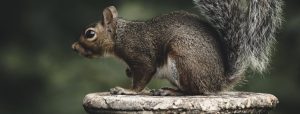
Squirrel in Attic in Richmond, VA
Squirrels can be a problem for homeowners in Richmond, Virginia, throughout the year, but there are certain times of increased activity. Spring is mating season
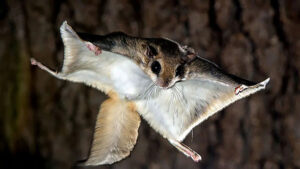
Flying Squirrels in Greenville-Spartanburg
There are two species of flying squirrels in Greenville – The Northern Flying Squirrel and the Southern Flying Squirrel. Both are nocturnal so it can
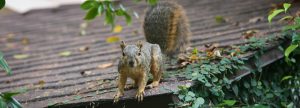
Squirrels on Roof in Olathe, KS
Squirrels might be adorable when scampering about the yard, but they quickly lose their charm when living within a home’s walls or attic. Squirrels are
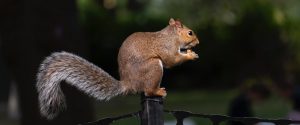
Squirrel Removal in Wake County
The most effective method to get rid of squirrels is to trap them. You can also get a squirrel to evict itself with a one-way
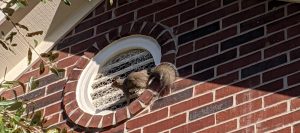
Squirrel Exclusion in Charlotte
If you have a squirrel infestation in your home, the most effective squirrel control option is a full home exclusion. Simply trapping and removing the
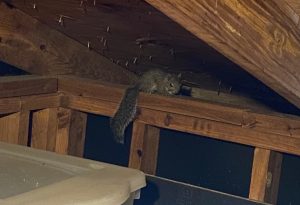
Squirrel Removal in Charleston, SC
People usually do not think of squirrels as pest. Most people consider their scampering and scurrying through the trees cute. Their activity is much less
Squirrels in the House
There are over 200 different species of squirrels in the United States. The squirrel family (Sciuridae) includes ground squirrels, tree squirrels, chipmunks, marmots, prairie dogs, and flying squirrels. You are most likely to have a tree squirrel enter your home.
Several species of squirrels reside throughout the United States, and the more human habitation encroaches on their natural habitats, the more the pests take up residence inside homes. Manmade buildings offer shelter from harsh weather conditions and access to steady food sources, and squirrels especially like to set up nests in soffits, attics, wall voids, and roof eaves. They gain access to the indoors via loose roof tiles, chimneys, uncovered vents, and damaged screens.

SIGNS OF A SQUIRREL IN THE HOUSE
Once there are squirrels in the house, residents will be alerted to their presence via various sounds, smells, and signs of destruction. Individuals may hear gnawing, scratching, and pattering over the course of the day, which is unique to squirrel infestations as most other home-invading pests are nocturnal. The sight of droppings, and the odors that accompany squirrel excrement, also help homeowners detect squirrels in the house. Finally, individuals may find nesting materials, such as torn insulation, cardboard, and twigs, in the pest’s favorite locations.
Squirrel in Attic
So you’ve been hearing noises in the attic, maybe you’re hearing scratching above your head while getting ready in the morning, maybe it’s gnawing in the walls when you get home from work. Sounds like you probably have squirrels in your attic. We deal with various animals making their home above your head, but squirrels are the only exclusively diurnal, or active during the daylight hours, animal we find up there. The other animals we deal with are almost exclusively nocturnal, or active at night. What that means for you is that if you’re hearing noises during the day, it’s a very good bet that squirrels are the culprit. Most people think of squirrels as the cute little animals scampering through the trees, but these cute creatures are a nuisance pest problem.

WHY WOULD SQUIRRELS IN THE ATTIC BE A PROBLEM?
While squirrels are not known for the zoonotic diseases, diseases that could be transferred from an animal to a person, or damage to a home usually associated with rats or raccoons, squirrels are just as bad, they just don’t have the same reputation. Being rodents, just like rats, squirrels must gnaw constantly to file down their incisors, or front teeth, for this reason alone they can cause quite a bit of cosmetic damage to the exterior home, and even damage ductwork, pipes and wiring in the interior of your home.
Also, much like raccoons, squirrels are usually found in the attic because they are looking for a place to nest and rear young. This means that not only are they leaving urine and fecal material in your attic, they are also leaving ectoparasites like fleas, ticks, and mites up there, and using the insulation to make their nests, contaminating and damaging it. The longer the squirrels are up there, the worse the damage becomes. Additionally, don’t think that the issue stops with just the squirrels presently in your attic or that removing them from the attic is the complete solution.

How Do Squirrels Get into the Attic?
Those squirrels had to get in there somehow, and neglecting to close those entry points can lead to more problems than just another family of squirrels moving in. The squirrels left nesting material, urine, fecal, and scent markers in the attic, which can actually end up drawing raccoons, opossum, and even rats to your attic looking for them, looking for an easy meal, or someplace for the new animals to nest, making your problem exponentially worse. That’s why when it comes to having squirrels in the attic, trapping and removing them is only a small part of the solution for the problem, especially considering that most squirrels aren’t nice enough to put out a welcome mat letting you know how they are getting in.
In fact, the majority of the entry points we find on houses are actually construction gaps, areas that have been accessible since the home was built, and it was just a matter of time before something got in. Even the cutest of animals can cause issues when they get into your attic. So whether you’ve heard noises in the past and paid them no mind, are hearing them now, or just want to have the peace of mind that you won’t hear them in the future, have a professional wildlife removal specialist come out and take care of the job in its entirety.
QUESTION:
I think I have squirrels in the attic. I spoke to someone about removal and all he wanted to do was poison and leave them to decay. I am worried about the smell and more getting in. Do you pinpoint the entry point and remove?
-Winston-Salem, NC
ANSWER:
Trutech can certainly solve your issue. This is one of the most common scenarios that we encounter.
The cost varies greatly from one case to another, which is why we offer an inspection for a minimal fee. Upon inspection, we will likely need access to the attic to determine the type of pest that we are dealing with, as well as any potential damage that it has caused that may need remedying.
Once we know the pest, we will need to thoroughly inspect the roof and foundation to determine the location of all of the potential entry points. We will likely need to trap them in order to remove the animals, seal all of the entry points, and use a type of control program that varies dependent upon the target pest to ensure that they stay out. If the attic has been soiled, we offer attic treatments and removal if possible. This is a process that usually takes one to three weeks.
QUESTION:
I believe that we have squirrels in our attic. We have been hearing scratching and gnawing sounds sporadically over the past 2 months. I believe that they are entering the house through our roof vents. What method do you use to get rid of squirrels? What would be the cost? Is there any guarantee?
ANSWER:
Thank you for the question. It sounds like you are way ahead of most folks if you have identified the entry points. This is one of the crucial first steps. We have several methods that we can deploy, depending on the circumstances, to remove the offenders. The price depends on what methods we utilize. Unfortunately, sometimes the cost of removal is only the beginning, as if we don’t fix the entry points as well, the squirrels will just be replaced with more. When we come out, we will make these recommendations and get underway to solve this problem.
QUESTION:
I have squirrels in my attic. Do you remove squirrels and repair the entry area?
-Reading, PA
ANSWER:
Yes, we can definitely help solve your squirrel issue. We specialize in humane removal of animals from structures and provide warrantied solutions that include entry point repair and exclusion of other potential entry points.

SIGNS OF SQUIRRELS IN THE WALLS
Once infestations of squirrels in the walls are established, the pests leave evidence of their presence. Indicators include noises like squeaking, scratching, scurrying, and gnawing, as well as unpleasant odors produced by urine and excrement. On occasion, individual squirrels will die while inside wall voids, which leaves behind a distinct putrid odor and requires walls to be destroyed in order to remove the bodies.
Squirrel in Yards and Trees
In most parts of the country, having squirrels in yards is just a fact of life. They sometimes entertain with their energetic antics, but are more likely to annoy with their intrusive, destructive behaviors. As seed and plant eaters, squirrels frequently target bird feeders and ornamental vegetation. They dig up and eat flower bulbs, make holes in lawns to use as hiding places for food, and eat seeds meant to attract birds. The most damaging by-product of a squirrel in the yard is the possibility that it might chew its way into the attic.
Occasionally, a homeowner might find a dead squirrel in the yard. Unless several are found in a localized area or if there are visible signs of disease, such as emaciation, missing fur, or scabs, they are generally not a cause for concern. Pets should be kept away in case the animal came into contact with poison. Also, some jurisdictions might require notification of the discovery, so local government guidelines should be consulted.
Infestations of squirrels in trees will be readily apparent as the bushy-tailed rodents are often seen scampering about yards and climbing up tree trunks. Their clawed feet make them excellent climbers, but they tend to leave visible scratches on trunks, fences, and house exteriors. Tree squirrels can also be extremely vocal animals, chattering and squeaking as they chase each other about. Finally, homeowners should be able to determine which trees are housing populations of the pests by looking for squirrel nests in tree branches.
Squirrels We Remove
Frequently Asked Questions
Flying, tree, and ground squirrels can carry a number of diseases transmissible to humans. These members of the rodent family are carriers of tularemia, leptospirosis, and other illnesses common in rats and mice. Ground squirrels in the southwest have also been known to transmit bubonic plague, an infection resulting in fever, gangrene, and skin lesions. In fact, several parks and campgrounds in this region have been closed for treatment as a result of plague-infected squirrels. The furry pests are also prime vectors for ringworm, fleas, and ticks, each of which carries its own health risks.
Several squirrel deterrent options exist to lessen the damage. However, none are perfect solutions and some issues may affect their success.
- Fencing – Chicken wire fences keep squirrels from digging up newly planted garden vegetables, but aren’t as effective with full-grown plants.
- Chemical control – Chemical squirrel repellents mimic the urine scent of predators. However, when they choose a nesting site, these pests may find nearby food more important than the potential danger.
- Electronic squirrel deterrents – Noise-making devices make sounds that frighten these pests for a short time, but they quickly learn to ignore it.
Many squirrel repellents can be costly and time-consuming. In addition, they may not address some problems. For example, wrapping a fruit tree’s trunk in sheet metal prevents squirrels from climbing up the tree, but doesn’t stop them from simply jumping from another tree or tall structure to reach fruit.
Many people try a more direct approach to control. There are plenty of squirrel traps on the market, but the pests may learn to avoid them. Some state laws also restrict trapping and relocation without a permit.
Squirrel repellents are a good method to reduce the number of these rodents nesting around the house, but homeowners should call the pest specialists at Trutech for complete removal.
Squirrels can cause a great deal of damage to both the interior and exterior of your home.
Squirrels’ damage usually comes from their chewing and gnawing. Squirrels can squeeze through a hole the size of a golf ball. Squirrels can chew through siding, wood, metal, and shingles to gain access to your attic.
Once inside your home, squirrels damage attics by chewing wires, ripping up insulation, and defecating in the attic.
So you’ve been hearing noises in the attic, maybe you’re hearing scratching above your head while getting ready in the morning, maybe it’s gnawing in the walls when you get home from work. Sounds like you probably have squirrels in your attic. We deal with various animals making their home above your head, but squirrels are the only exclusively diurnal, or active during the daylight hours, animal we find up there. The other animals we deal with are almost exclusively nocturnal, or active at night. What that means for you is that if you’re hearing noises during the day, it’s a very good bet that squirrels are the culprit. Most people think of squirrels as the cute little animals scampering through the trees, but these cute creatures are a nuisance pest problem.
To control populations of squirrels in the yard, homeowners can switch to birdseed the pests won’t eat such as safflower and millet. Fit trees with metal collars six feet off the ground to keep the animals from climbing on branches. Tented netting can also be used to protect high-value plants during daytime hours of peak squirrel activity. Since the pests nearly always gain access to homes via the roof, overhanging tree branches should be trimmed, as well as any that come within six feet of exterior walls. Trutech has wildlife control experts available to help residents protect their home and property from squirrels.
Infestations of squirrels in trees will be readily apparent as the bushy-tailed rodents are often seen scampering about yards and climbing up tree trunks. Their clawed feet make them excellent climbers, but they tend to leave visible scratches on trunks, fences, and house exteriors. Tree squirrels can also be extremely vocal animals, chattering and squeaking as they chase each other about. Finally, homeowners should be able to determine which trees are housing populations of the pests by looking for squirrel nests in tree branches.
Once infestations of squirrels in the walls are established, the pests leave evidence of their presence. Indicators include noises like squeaking, scratching, scurrying, and gnawing, as well as unpleasant odors produced by urine and excrement. On occasion, individual squirrels will die while inside wall voids, which leaves behind a distinct putrid odor and requires walls to be destroyed in order to remove the bodies.
Squirrels in attics cause significant damage and frustration for homeowners. They often exploit weaknesses in roof and attic vents to gain access to the home. A detailed inspection is required to provide a comprehensive solution to a squirrel problem. It is important to identify all current and potential future entry points around the home. Squirrels will be removed by a 10-14 day trapping process that could utilize different types of traps and cages in configurations best suited to the construction of the home. Once the squirrels are removed, the identified openings should be repaired or reinforced to prevent future problems. A trained Trutech technician can perform these exclusion services.
Depending on the species of squirrel, the life expectancy is typically 1-4 years. In captivity, some squirrels have lived as long as 20 years.



